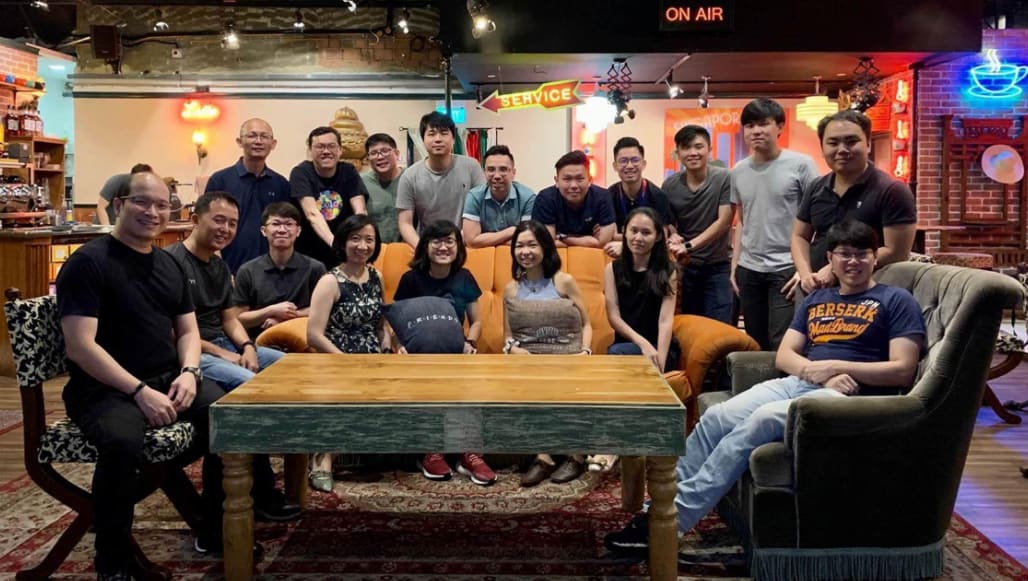SafeEntry's Development Story

"Hey! How do I get a QR code for re-opening next week?"
"Is the QR code for my shop ready yet?"
"I don’t have a printer, can you print my QR code and deliver it to me?"
"Which is the best app to scan the QR code?"
These were some of the questions we received when we first started working on SafeEntry.
When the Multi-Ministry Taskforce announced on 23 April that SafeEntry should be deployed by businesses for essential services, the team received an influx of requests from businesses.
What started as a web form to replace paper contact tracing forms became a national system overnight. The pressure was greater than ever when on 2 May, it was announced that all businesses and services that are in operation needed to come on board SafeEntry within the next 10 days!
We only had our experiences
With businesses and livelihoods depending on us, we leveraged our past experiences and rolled up our sleeves to expedite our development. We looked at two existing products that we had built – the Travel & Health Declaration System (THDS) and National Digital Identity (NDI) Developer & Partner Portal (DPP).
THDS provided the web application which allowed individuals to check-in and check-out, while DPP provided the self-service and automated on-boarding platform for businesses to get their QR codes.
SafeEntry developers talked about the challenges they faced, as well as what they thought on the memes that SafeEntry spawned!
Putting our users first
We knew that the priority of business owners was to navigate their businesses through the COVID situation, and in order to assist them in a timely manner, we had to make sure we provided them with a seamless on-boarding process.
The main challenge was truly the sheer numbers. More than 58,000 locations and 30,000 businesses applied for SafeEntry QR codes within the first opening weekend.
To speed up the process, we leveraged available digital channels, with CorpPass being one of our key means. As businesses were already familiar with CorpPass, all they had to do was log in, provide their operating address, and download their QR code. Time taken for this application to be processed? Six seconds.
At our peak on 11 May 2020, we provisioned over 16,600 QR codes to 5,600 businesses in one day through this self-service automated channel.
Grappling with the non-tech side of things
SafeEntry is a national system which would potentially be used by up to 220,000 businesses and 5.7M residents. To cater to diverse users, the user interface needed to be as simple as possible.
There were also non-product-related questions that we had to tackle, mainly those involving education and awareness.
-
How to use SafeEntry?
-
Why it’s important to use SafeEntry?
-
Is it a necessity to use SafeEntry?
This challenge was made harder by the fact Singapore is made up of a diverse population and business ecosystem with different levels of digital literacy. Not everyone had smartphones, data plans, or could on-board digital solutions with ease.
Eventually to bridge this gap, we included a complimentary low-tech and yet, elegant solution – the scanning of barcodes on NRICs and IDs to bridge this gap. In total, that made 3 ways of checking in.
-
Scanning the QR code with SingPass Mobile to determine your location
-
Scan the QR code and fill in personal details
-
Use your NRIC or any official ID with a barcode
We adapt to our users’ changing needs
When Singapore entered Phase One (Safe Re-opening), the team started to head out to buy our meals and essential items, and that’s when we observed businesses having difficulty placing their QR codes in their SafeEntry poster.
We decided to auto-generate SafeEntry posters, which included their unique QR code.
Business owner of Pigmently Studio shared on Facebook, “A couple of days ago, I received an email from Team SafeEntry. Whoah I see a few links to click, another paperwork, another to-do and then I saw a 1-page PDF attached under the email. Clicked on it and voila! I see my SafeEntry QR Code. I really didn’t expect this!”
We also noticed that some users preferred not to queue and scan QR codes, so the team built another function to allow SingPass Mobile users to check-in to their locations through a location-based function in their app. This option proveduseful for visual impaired users, who found it challenging to scan QR codes without help.
In preparation for Phase Two (Safe Transition), the team introduced a group check in function, after observing families with young children and elderly struggling to check in when they are out.
Thankfully, with the new features and everyone’s efforts to check in and out, contact tracers can now use SafeEntry logs of locations that patients have been to as a reference in their contact tracing efforts.
What’s next, then?
Since launch, we have seen an average of 9 million daily check-ins, with over 2.2 million unique users across 200,000 locations.
But things are not done and dusted for us yet! While the team is encouraged by the fact that many seniors are familiarising themselves with QR code technology, we will continue to look at ways to improve the user experience of SafeEntry for individuals and businesses.
Here are just some of the improvements that we are currently working on;
-
Making it easier for individuals to find a venue
-
Reducing the number of taps to check in/out
-
We are also working with other agencies to help individuals become more familiar with scanning QR codes and how to use SafeEntry
-
Potential feature to display your risk exposure
We expect to be rolling this out gradually over the next few months, so do keep an eye out for it!
In the meantime, we hope you continue to use your phone to check in/ check out – after all, it’s mandatory.

